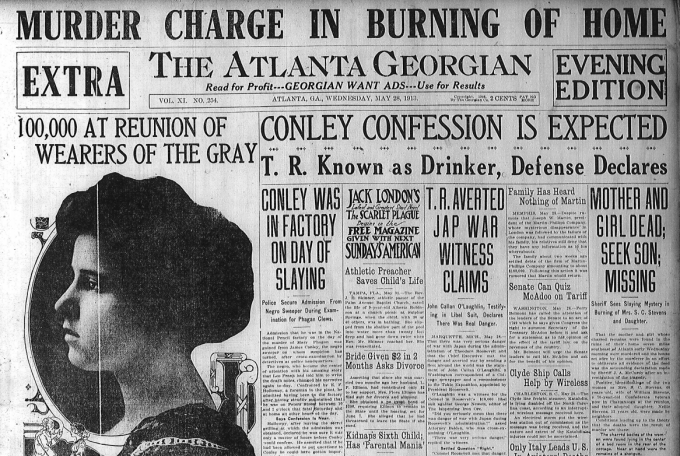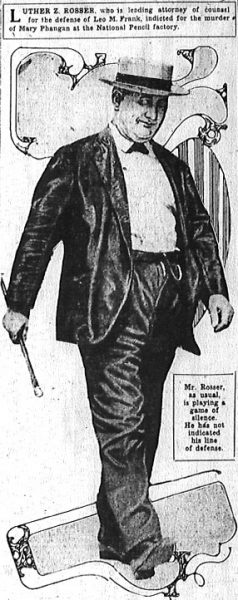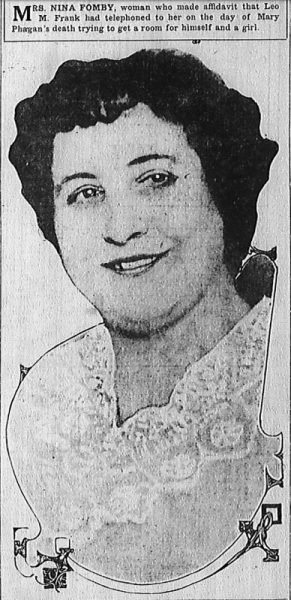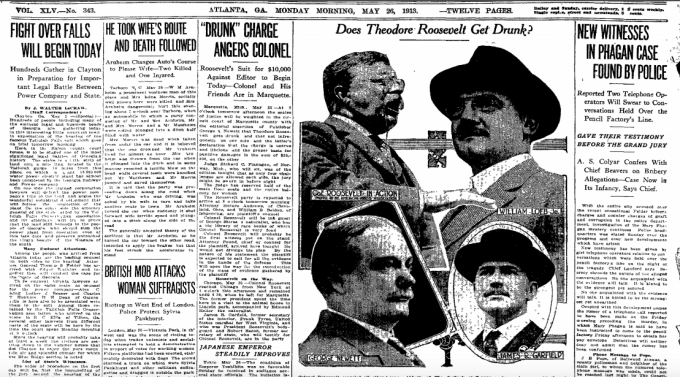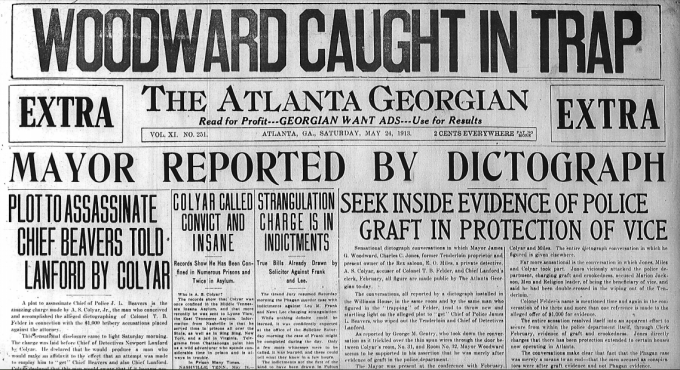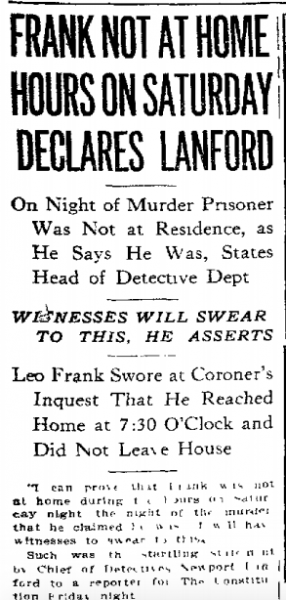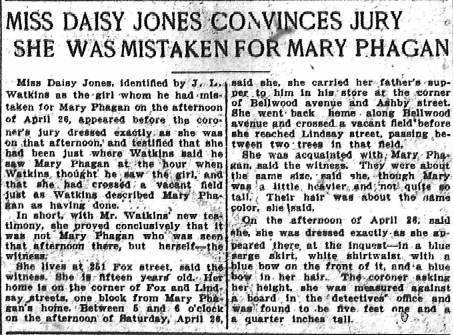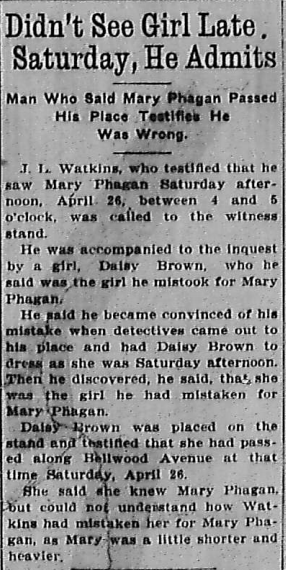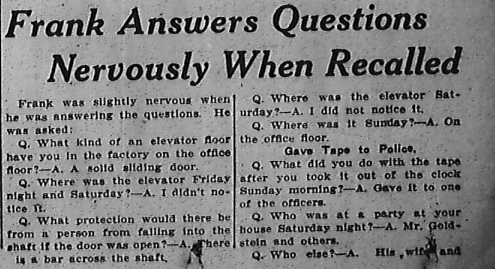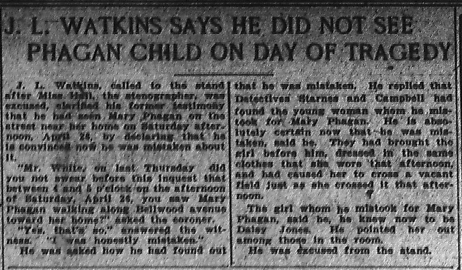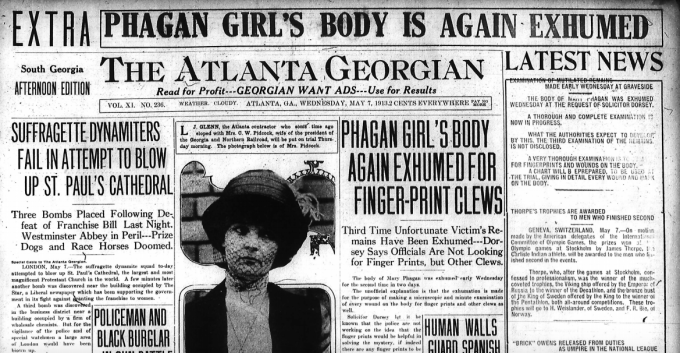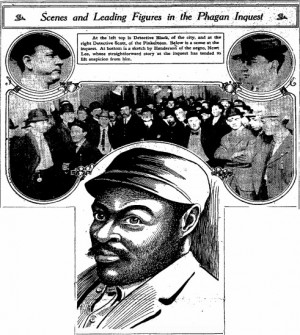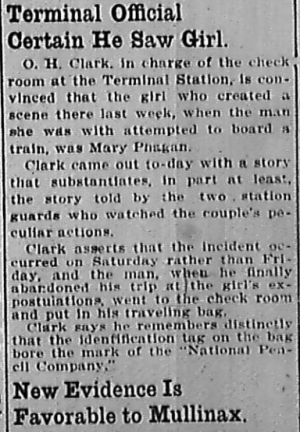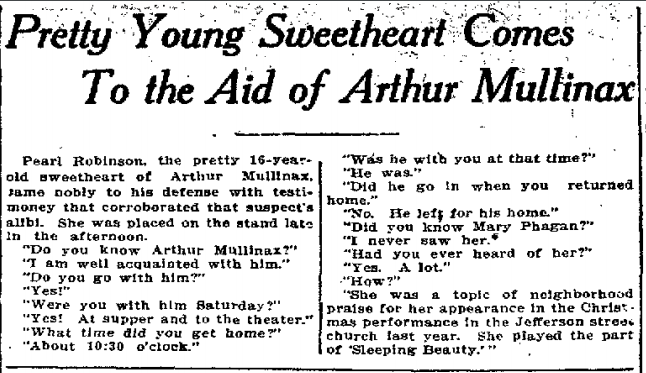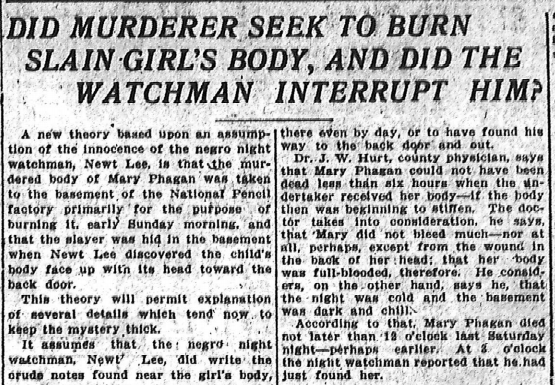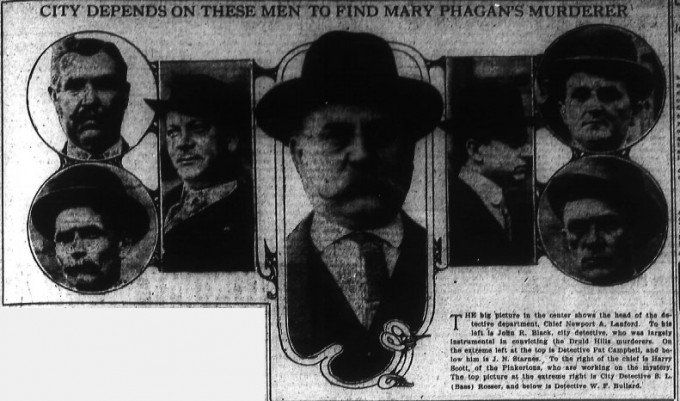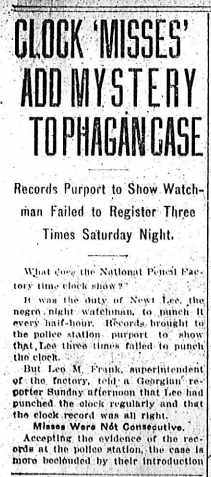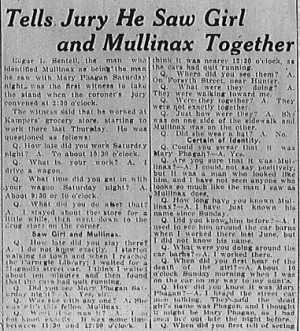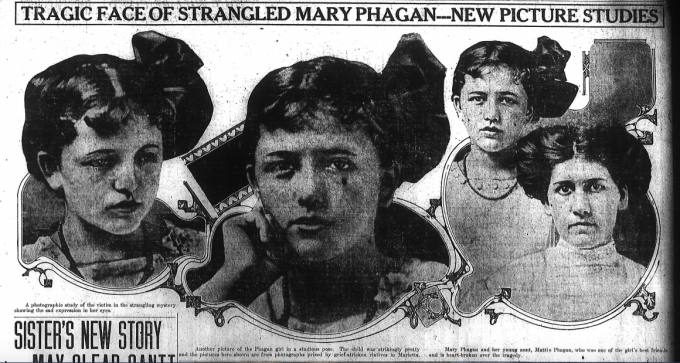Another in our series of new transcriptions of contemporary articles on the Leo Frank case.
Atlanta Journal
Monday, April 28th, 1913
Arthur Mullinax, Trolley Conductor, Denies That E. L. Sentell Saw Him Saturday Night With Mary Phagan
Arthur Mullinax, identified by E. L. Sentell, of 22 Davis street, clerk for the Kamper Grocery company, as the man whom he saw with Mary Phagan, the murdered girl, at midnight Saturday, vehemently denies any part in the atrocious crime, and declares that he will be able to prove an alibi. Subjected to a quizzing in the office of Chief of Police Beavers, he told an apparently straightforward story of his actions on the night preceding the finding of the body. Investigation of his statement by the police, however, developed discrepancies, they say. He is kept in solitary confinement on a tentative charge of suspicion.
Sentell, who was an acquaintance of the dead girl, told the police that he saw her at Forsythe and Hunter streets with Mullinax at 12:30 o’clock Sunday morning. He said he spoke to her and that the former street car man tipped his hat in response to the salutation.
In the presence of Chief Beavers, Chief of Detectives Lanford, Police Captain Mayo and Detective Black, the clerk and Mullinax were brought face to face. The clerk reiterated his identification. Pointing at the prisoner, he said:
“That is the man who was with the girl last night. I’m positive. There’s no doubt about it.”
“It’s false! It’s a lie!” cried the man accused. “I was at home asleep, and I can prove it.” Continue Reading →


